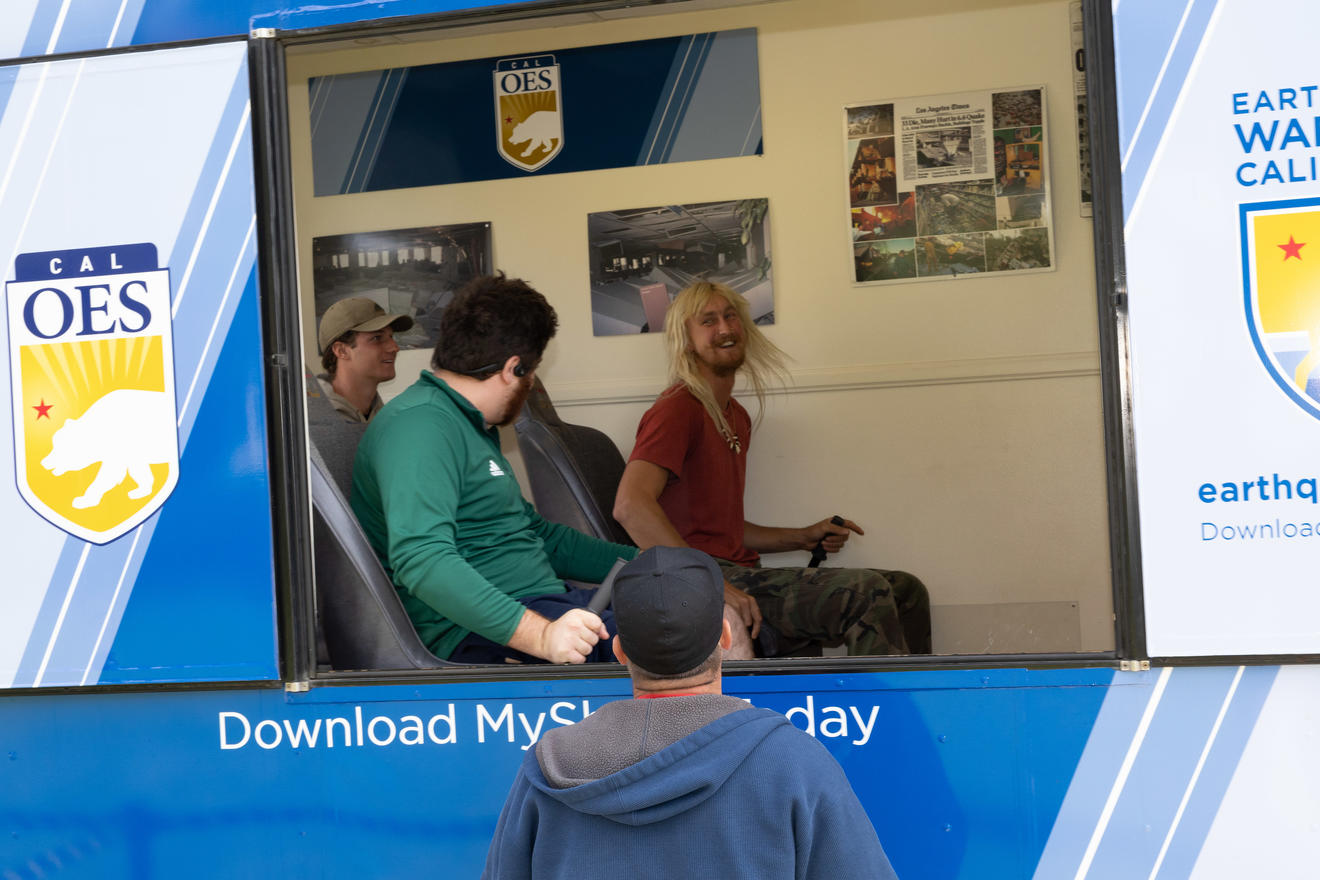Those of us lucky enough to live in San Diego County know how breathtaking the area can be. But like all of California, San Diego is earthquake country. Understanding the risks and preparing to survive and recover can help keep your family safe.
Today, as millions of Californians drop, cover and hold on as part of the 16th annual statewide earthquake drill, Great California ShakeOut, here are some important steps from ShakeOut.org that you should know to help you stay safe before, during and after an earthquake.
Prepare
Before the next earthquake, go over these four steps to help keep you, your family, or your workplace better prepared to survive and recover quickly:
- Step 1: Secure your space by identifying hazards and securing moveable items.
- Step 2: Plan to be safe by creating your emergency plan and deciding how you will communicate.
- Step 3: Organize emergency supplies in convenient locations.
- Step 4: Minimize financial hardship by organizing important documents, strengthening your property, and considering insurance coverage.
Survive
Step 5: During an earthquake or if you get an alert – DROP to the ground, take COVER under a sturdy desk or table and HOLD ON until the shaking stops, protecting your head and neck with one arm. If you are in a wheelchair, lock your wheels, bend over and cover your head and neck with your arms, a book or a pillow and hold on until the shaking stops.
- If you are outside, move away from buildings, trees, streetlights, or powerlines.
- If you are driving, pull over and stop away from buildings and trees.
- If you are at the beach or along the coast, watch for the signs of a tsunami .
- Be ready for aftershocks.
- To find an expanded list of how to stay safe in different situations, including accessibility recommendations, visit earthquakecountry.org/step5.
Recover
After the immediate threat of the earthquake has passed, your level of preparedness will determine your quality of life in the weeks and months that follow.
- Step 6: Improve safety after earthquakes by evacuating if necessary, helping the injured, and preventing further injuries or damage.
- Step 7: Reconnect and restore daily life by reuniting with others, repairing damage, and rebuilding community.
Other important safety tips
- Do not run outside. Trying to run in an earthquake is dangerous, as the ground is moving, and you can easily fall or be injured by debris or glass. Running outside is especially dangerous, as glass, bricks, or other building components may be falling. It is much safer to stay inside and get under a sturdy desk or table.
- Do not get in a doorway. Once a widely discussed safety measure, studies have shown that doorways are not the safest place to be during a earthquake because they do not protect you from flying or falling objects.
Earthquake Simulator Event
Are you curious what a 7.0 magnitude earthquake feels like? The California Office of Emergency Services is hosting an earthquake simulator, open to the public from 8 a.m. to 1 p.m. in Parking Lot 5 at Cuyamaca College on Rancho San Diego Parkway, across from the Student Services Center, Thursday, Oct. 19.
Natural Gas Safety Tips
- Check smoke and carbon monoxide detectors to make sure they are working properly.
- Know where your gas meter is located and keep a 12-inch or giant adjustable wrench with your emergency supplies, near your building exit or next to your gas meter shut-off valve. Do not store the wrench on the gas meter or other gas piping.
- Be prepared to turn off your natural gas meter but ONLY if you smell natural gas, hear the sound of natural gas escaping or see other signs of a leak – and ONLY if it is safe to do so. (Depending on how many customers are without natural gas service, it may take an extended period for SDG&E to turn your natural gas services back on.)
- If you turn off gas to the meter, leave it OFF. Please do not turn it back on yourself. Interior gas piping and appliances should be inspected for possible damage before service can be safely restored.
- Call SDG&E to turn the gas back on, relight the pilots and service your appliances. (Note that certain repairs may have to be performed by your plumber or heating contractor. However, only SDG&E field employees are allowed to turn on the gas to the meter.)
- DO NOT ignite a flame or use any electrical appliances, light switches or other devices that can cause a spark until you are sure there are no gas leaks.
For more information on gas safety, please visit sdge.com/gas-safety. For more earthquake preparedness safety tips or to learn about the Great ShakeOut visit shakeout.org.